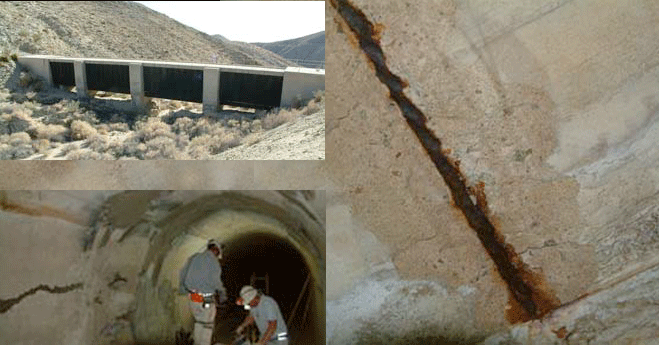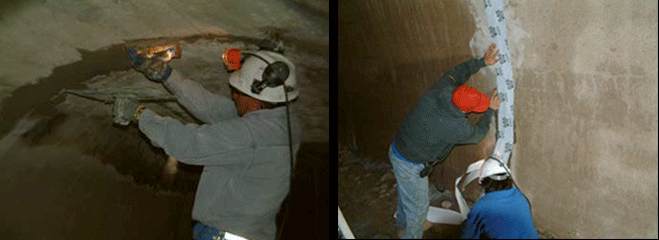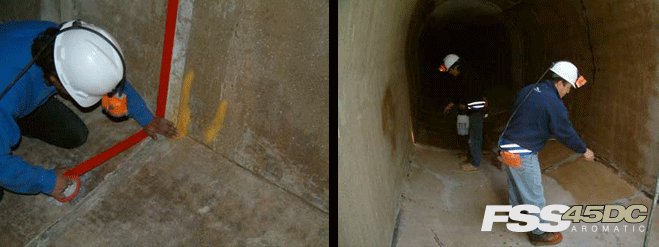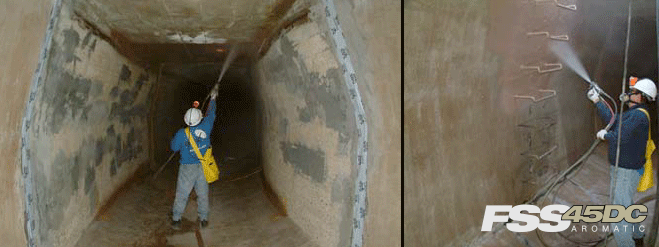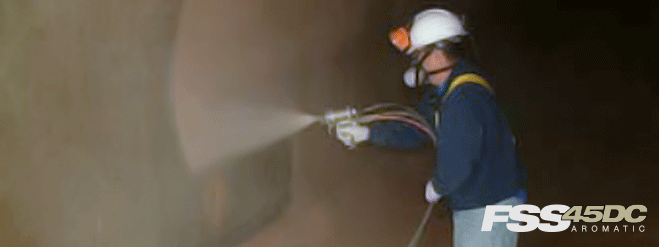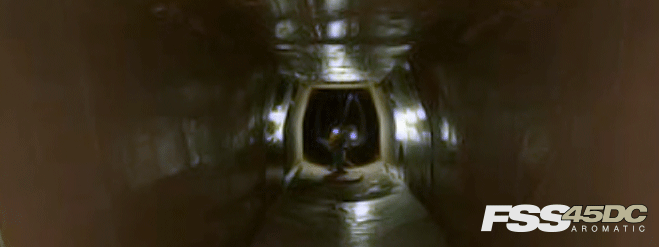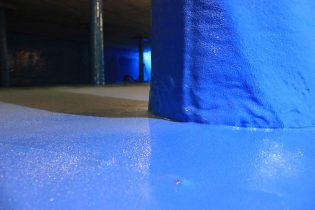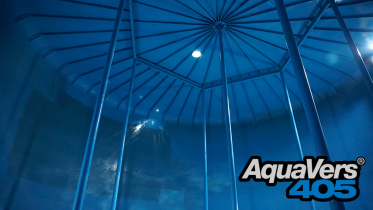Los Angeles DPW, Aqueducts: FSS 45DC Pure Polyurea
MARKET: Potable Water: Aqueducts
SYSTEM: PW-1 Primer, FSS 45DC Elastomeric Polyurea
PROJECT: Protective Coating, California Aqueducts
OWNER: Los Angeles Department of Water & Power
CONTRACTOR: KC Industries
In early 1999 VersaFlex began working with the Los Angeles Department of Water and Power in Mojave, California. An initial test application was provided to show the advantages of the VersaFlex technology. The Department of Water and Power (DWP) was interested in this coating technology because of the problems they were experiencing using conventional methods to repair concrete and steel water lines.
With several successful applications installed, DWP decided to utilize VersaFlex FSS 45DC as a protective lining inside five separate concrete lined metal structure flumes. These leaking flumes are located in an environmentally sensitive area, raising concerns about structural degradation due to corrosion.
Extending the useful life of these structures was of the utmost importance. Beginning in December of 2002, KC Industries, a certified VersaFlex contractor, began a six day project to coat each of the five flumes with 80 mils of VersaFlex’s FSS 45DC pure polyurea.
Expansion joints were isolated using a 6-inch bond breaker tape placed over the center of the joint. FSS 45DC was applied in a higher-build application over the bond breaker tape to provide extra protection during normal expansion and contraction of the structure.
Mechanical keys were cut into the concrete at the coating termination points. This was done to eliminate raw edge exposure and insure long-term mechanical adhesion. Tape was placed beyond the termination line to provide an overshoot area. Excess coating was cut at the tape/ concrete interface and removed.
VersaFlex PW-1, a single-component, fast drying, water-dispersible primer was used prior to application of the coating system.
VersaFlex FSS 45DC was then applied through plural-component spray equipment. According to the specifcations, a thickness of 80 mils was required. Because of the fast cure times, theoretical coverage rates were used. Material volumes were checked against pre-measured sections marked on the tunnel walls.


